You may have
witnessed gender inequality or experienced it yourself at some point in your
life. Gender inequality is prevalent at school, work, and in other parts of
your daily life. Interestingly, there is a number that measures the level of
gender inequality of each country and the world as a whole. And it is called
the Gender Gap Index.

―
Q. What is Gender Gap Index?
―
A. The Gender Gap Index is published by the World Economic
Forum since 2006, and it measures the gender gap in about 100 countries each
year.
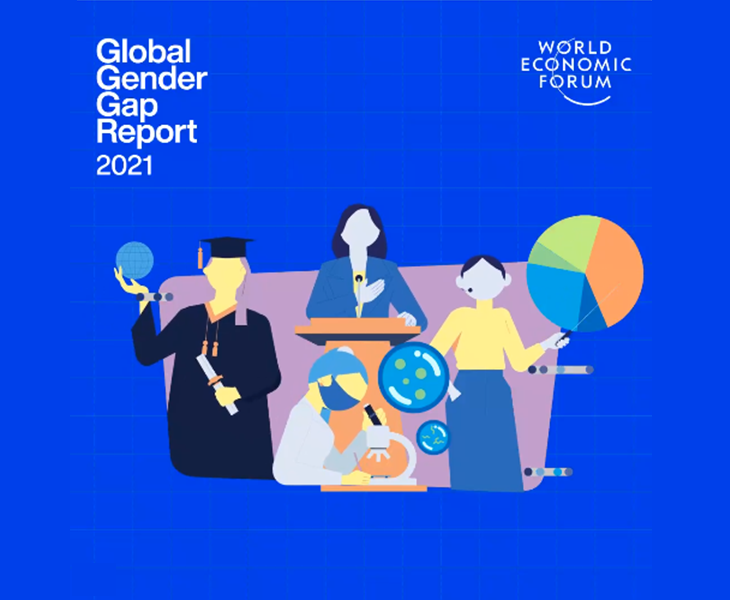
It assesses the rights and
opportunities of men versus women in each country four key areas. ▲Economic Participation and Opportunity ▲Educational Attainment ▲Health and Survival and ▲Political Empowerment.
The Global Gender
Gap Report shows comparison between countries to identify countries with small
and large gender gaps. It also determines how far away we are from gender
equality.
Watch video : What is Gender Gap Index?
―
Q. How is Gender Gap Index Calculated?
―
Gender gap index is calculated in the framework of 4 categories between 0 (0% equality) and 1 (100% equality). The final score closer to 0 means a bigger gender gap. The final score closer to 1 means we are closer to gender equality.
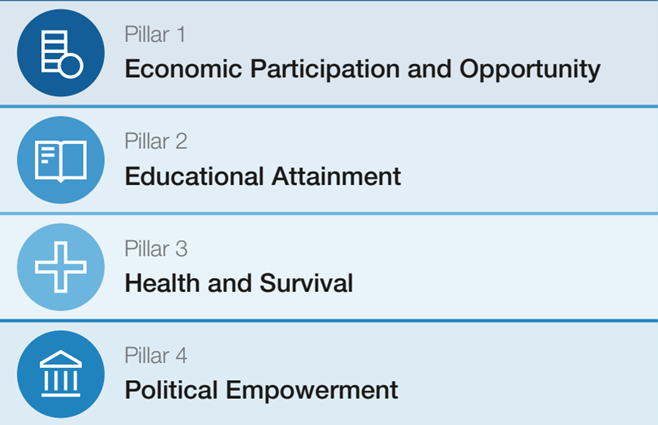
◈ Economic Participation and Opportunity
This category measures the ratio of male to female in labor participation, in
managerial positions, in professional jobs, and their wages.
◈ Educational Achievement
This category measures the ratio of male to female illiteracy rate, school
entrance rate, elementary education, and secondary education.
◈ Health and Survival
The category measures the ratio of male to female in birth rate and expected
healthy life expectancy.
◈ Political Empowerment
This category measures the ratio of male to female lawmakers, parliamentarians,
and government leaders.
The gender gap
index diagnoses the current degree of gender gap and
identify effective policies to narrow the gender gap by comparing scores across
countries.
However, it is important to note that the index only focuses on
how big the “gap” is between men and women. It means that even if women
have high representation and status in a country, the gender gap score may be
low because it’s lower in comparison to men.
This is because the gender gap index is designed to be calculated
by evaluating only the gender gap within the country without reflecting
the different economic and social level of each country.
In other words, even if the quality of life is low for both men
and women, the score can be high even if the gender difference is relatively
small. For example, in places like Rwanda with continuous war, the gender gap
is small because the score is low for both men and women.
We should remember that the gender gap index is useful for
comparison among countries with similar economic levels.
―
Global Gender Gap Report in 2022
―
Now let’s take a
look at the most recent global gender gap scores.

Assuming that 100% means perfect gender equality, the global score
for equality in 2022 was 68.1%.
At this rate, it will take 132 years for the world to reach full
gender equality. This is actually an improvement from the 2021 estimate of 136
years.
The below graph shows the Global Gender Gap score for each sub
index. ▲ Economic Participation and
Opportunity (60.3%) ▲
Educational Achievement (94.4%) ▲ Health
and Survival (95.8%) ▲
Political Empowerment (22%). Two dimension that need urgent improvement are
education and politics.
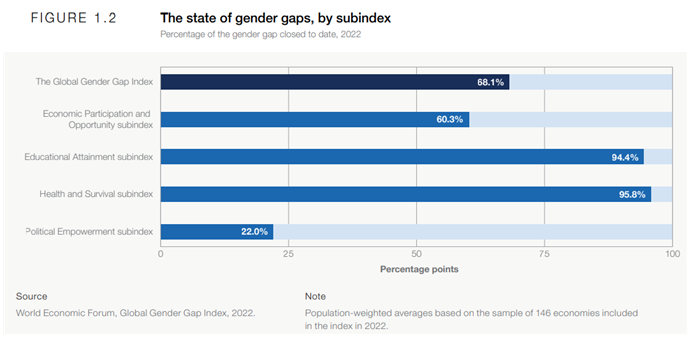
The 2022 Global Gender Gap Index surveyed 146 countries. 102 of
those countries have been included in the reports since 2006, enabling time
series analysis.
―
Which regions experience bigger gender inequalities?
―
● Gender Gap by region in 2022

According to the 2022 Gender Gap Index, North America (76.9%),
Europe (76.65), Latin America and the Caribbean (72.6%) are more gender-equal. Sub-Saharan
Africa (67.8%), Middle East and North Africa (63.4%) and South Asia (62.4%) are
less so.
It seems urgent to improve the human rights of women in
sub-Saharan Africa, the Middle East and North Africa, and South Asia.
● 10 countries with the biggest gender gap in 2022
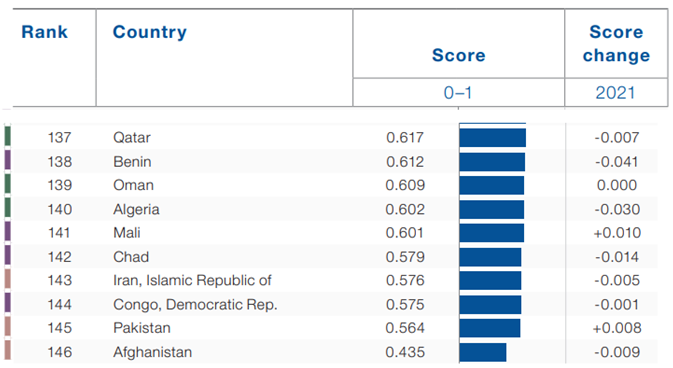
In 2022, Afghanistan (0.435) topped the list with the largest
gender gap. Countries in the Middle East and Africa also ranked high. Pakistan
(0.564), Democratic Republic of the Congo (0.575), Iran (0.576), Chad (0.579),
Mali (0.601), and Algeria (0.602).
Click to read about gender gap in Afghanistan
● 10 Countries with the smallest gender gap in 2022
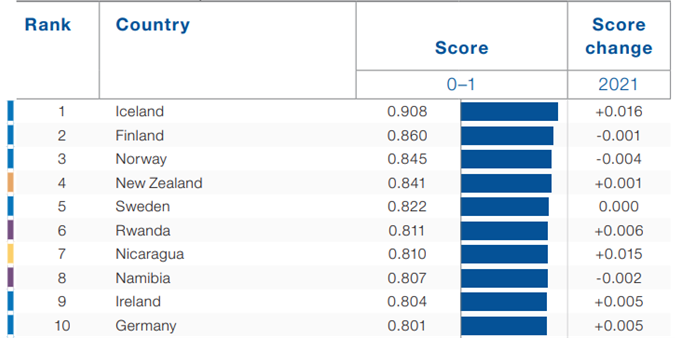
According to the 2022 Gender Gap Index, Iceland (0.908) topped the
list for the 13th consecutive year, followed by northern European countries
such as Finland (0.860) and Norway (0.845), followed by New Zealand (0.841)
Watch related video: Study gives new insight into gender pay gap, questioning previous research | DW News
―
Various indicators to measure gender inequality
―
In addition to the Gender Gap Index, there
are various other indicators that measure gender equality. Two of them, the "gender
inequality index" released by the United Nations and the “mobile gender
gap” are emerging as important indicators.
● Gender Inequality Index (GII)
It is an index created by the United Nations Development Program
(UNDP) in 2010 to measure the degree of gender inequality in each country. Since
1990, the United Nations Development Programme (UNDP) has published its annual
Human Development Report, which includes the Human Development Index as well as
the Gender Inequality Index.
The index measures five indicators in three categories. ▲ Health (maternal mortality ratio & adolescent fertility rate) ▲ Empowerment (share of parliamentary seats held & secondary or higher education attainment levels) ▲ Labour market (women’s participation in the workforce)
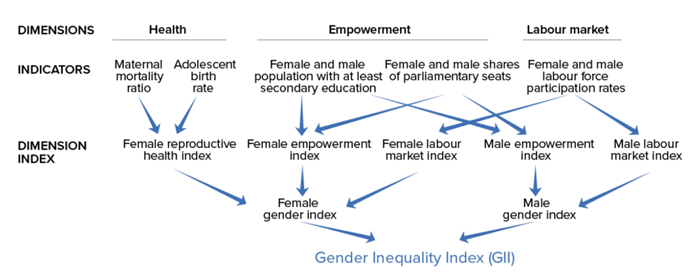
The index score is within a range of 0 to 1, with a score of 0
indicating a state of no inequality and a score of 1 indicating a state of
complete inequality.
In 1990, when the survey began, the global gender inequality index was 0.581. In
2021, we can see that it is gradually moving closer toward equality at 0.465.
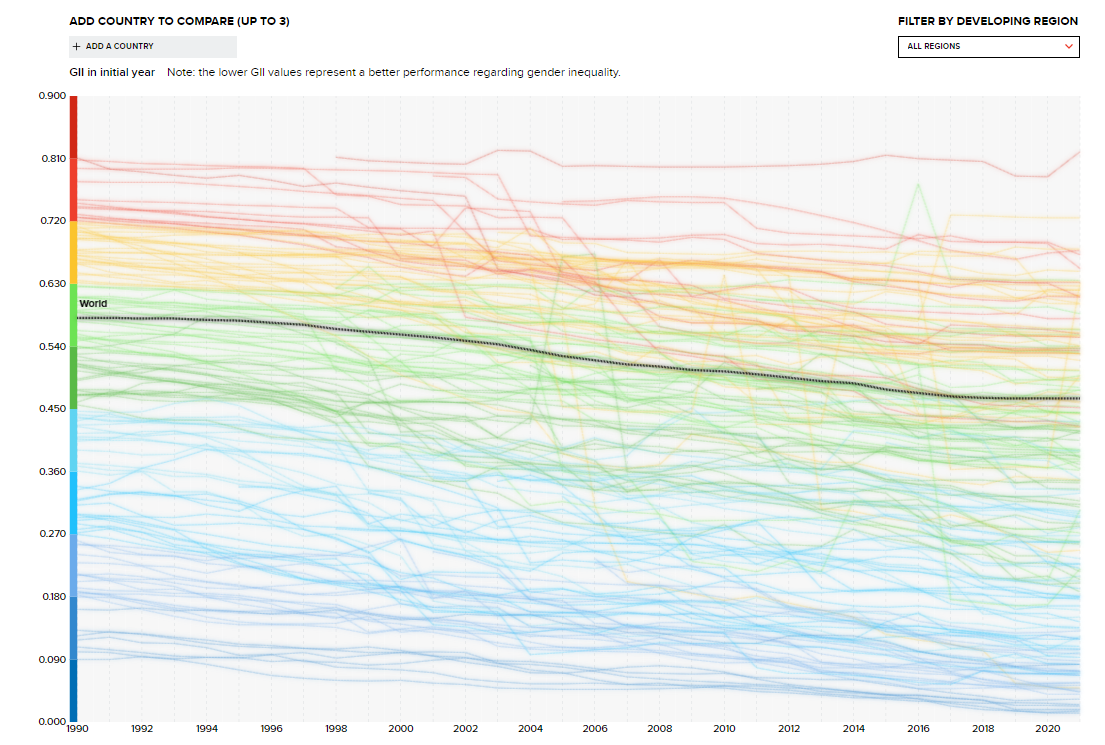
Read Report on Gender Inequality Index Report : Gender Inequality Index | Human
Development Reports (undp.org)
● Mobile Gender Gap
The Groupe Spécial Mobile Association (GSMA), a global association
of mobile network operators, has been tracking and publishing mobile Internet
gender gaps as a report since 2017.
In 2017, women were 25% less likely to use the mobile Internet
than men, but by 2020, the gender gap had narrowed to 15%.
However, in 2021, the gender gap in mobile Internet use increased
again to 16%, indicating that progress has stagnated. Women are 7% less likely
to own a mobile phone than men, and 16% less likely to use mobile Internet.
That means 264 million fewer women have access to the mobile Internet than men.
The gender gap in mobile Internet use worldwide is the largest in
South Asia and sub-Saharan Africa. In particular, from 2020 to 2021, South
Asian men's use of mobile Internet continued to increase, while there was no
change for women, increasing the gender gap from 36% to 41%.
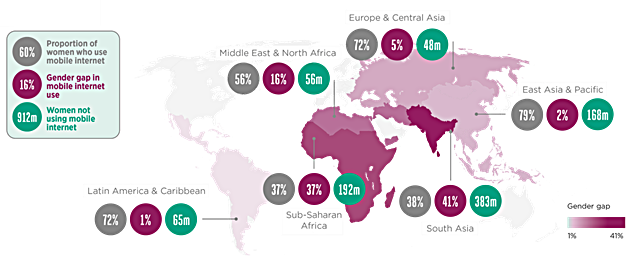
Link to the Mobile
Gender Gap Report2022 GSMA | Gender Gap - Mobile for Development
© GSM Association 1999 – 2019
―
Is Gender Equality possible?
―
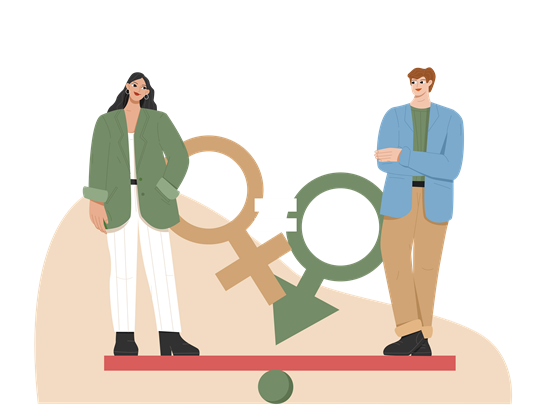
To achieve gender equality, social changes must be accompanied,
ranging from increasing women's representation in leadership and
decision-making to redistributing care labor and production resources.
According to the 2022 Global Gender Gap Index, the gender gaps in
education (94.4%) and health (95.8%) are narrowed. In contrast, the gender gap
in politics (22%) and economics (60.3%) is very large, which will be the areas
of focus for man countries.
Let's bridge the gender gap in Politics!
Politics has the largest gender gap. There are three indicators of
political empowerment. First is the ratio of women in the ministerial position.
Second is the ratio of women in the parliament. Third is the length of their
tenure as the head of the state.
Ratio of women in
the ministerial position may be increased by the will of the President or the
political party. However, more long-term and systematic
efforts are needed to improve the gender gap between the proportion of women in
parliament and the tenure of men and women at the head of the state. First of
all, females need equal access to education to raise women of talent, and
public awareness of female leaders also needs improvement.
Let's bridge the gender gap in the Economics!
Detailed indicators of economic participation include the
proportion of women in legislators and senior and managerial positions as well
as gender gap in wages and income.
The gender gap between female and male legislators and senior and
managerial positions is a task that is also in line with the proportion of
women in the parliament. This gap should be improved in the public sector first
then the government may encourage the private sector to follow in closing the
gap.
But the most
urgent issue is the gender gap in wages and income. There are many factors that
affect this gap, including structural barriers, socioeconomic and technological
changes, and economic shocks.
While more and more women are promoted to better paid jobs and leadership
positions, much of the social expectations, employment policies, legal
environments, and childcare put women at a disadvantage in most parts of the
world.
Undoubtedly, we still need new social policies in various sectors to
bridge the gender gap in the labor market.
―
5 ways to build gender equality and sustainability
―

In 2022, the UN Women proposed five ways to drive change and close
the gender gap widened during the pandemic.
1.
Empower women smallholders
Increasing the number of female smallholders would greatly help
promote women's economy.
*smallholders: small-scale farmers who manage
up to 10 hectares or about 25 acres of agricultural areas
Fifty-five percent of food security improvements in developing
countries over the past few decades have been made. And it is thanks to
programs that promote women's empowerment. The Food and Agriculture
Organization (FAO) estimates that if female farmers have equal access to
production resources, farm yields will increase by 20 to 30 percent. This number
is enough food to keep 100 to 150 million people from starving and reduce
global hunger by 12 to 17 percent.
2.
Invest in Care
The global economy relies primarily on unpaid and low-paid care work primarily performed
by women. Unfortunately, women's care work is not valued for what it’s worth and
is treated as a free commodity.
To improve this, governments should approach care work as a social
value, expand availability and provide adequate support. This includes
investment in expanding care services and increased support for unpaid
caregivers. The private sector can also support unpaid care through paid family
leave and flexible work hours.
3.
Support Women's Leadership
In general, women are more likely to consider their families and communities in
the decision-making process. Countries with a high proportion of women in
parliament tend to adopt stricter climate change policies, reducing carbon
emissions.
4. Support women's organizations
Cooperation between women's groups and governments can help ensure that
policies are implemented effectively. In vulnerable communities, women's groups
often act as an informal safety net, helping to bridge the gap in government
services and provide emergency assistance. If the government funds women's
organizations, it can build resilience in every corner of the community.
5. Protect Women's Health
Women are generally more likely to die from climate disasters because they have
limited access to resources and services. Global warming is increasing the
spread of diseases such as malaria, dengue fever, and Zika virus, which are
deeply related to negative pregnancy and childbirth outcomes.
Written by Sharon Choi
Director of Planning
Sunhak Peace Prize Secretariat

